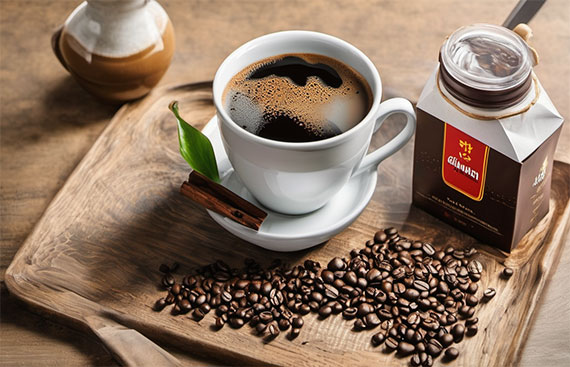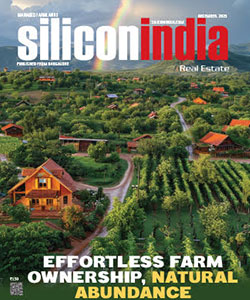How to Say Coffee in Vietnamese

In Vietnam, coffee is a way of life and a reflection of the country’s culture. Vietnamese coffee is popular for its unique flavors and brewing techniques.
In Vietnamese, the phrase used for coffee is cà phê (pronounced as kah-fey). Cà phê originates from the French word café, understandably because coffee was introduced in Vietnam by French colonizers. The coffee brand Cafely also borrows its name from Vietnamese. “Café” stands for coffee, and “ly” for cup, which loosely translates to a cup of coffee when said out loud.
Here, we’ll explore more about how to say coffee in Vietnamese.
How to Say Coffee in Vietnamese
Cà phê is the general term for Vietnamese coffee. However, there are various varieties of Vietnamese coffee, and knowing how to say and distinguish them will help you get the right drink.
Brown Coffee or Milk Coffee (cà phê nâu)
Since Vietnamese coffee is typically bitter, it’s usually sweetened using condensed milk. The resulting mixture is called brown coffee in the North or cà phê nâu (pronounced as kah-fey now). In the South, it’s called milk coffee or cà phê s?a (pronounced as kah-feh soo-ah). If you prefer coffee with extra condensed milk, it’s called cà phê b?c x?u (pronounced as kah-feh bahk see-oo). To get a refreshing experience, you can use Cafely’s Instant Vietnamese Milk Coffee.
Black Coffee (cà phê ?en)
Black Vietnamese coffee doesn’t contain condensed milk. It has a strong, aromatic, bitter taste. To balance the taste, it’s served with sugar and is called cà phê ?en (pronounced as kah-fey den). If you prefer to enjoy the drink without sugar, you order cà phê ?en không ???ng (pronounced as kah-feh den kohng doo-ong).
Phin Coffee (cà phê phin)
Phin coffee or cà phê phin (pronounced as kah-feh feen)is made using a specialized tool called a Phin filter. It has a filter that sits on top of a glass or mug filled with condensed milk.
The other component is a chamber with a perforated base, which is placed on top of the filter to allow brewed coffee to drip into the glass. This is where Vietnamese coffee is placed.
A Phin filter also consists of a pressing insert that presses coffee grounds for optimal extraction. Lastly, it has a lid that helps to contain heat from hot water in the brewing process. The resulting Vietnamese coffee has a rich, balanced flavor.
Egg Coffee (cà phê tr?ng)
Egg coffee, also calledcà phê tr?ng (pronounced as kah-feh troong), came onto the scene in the 1940s when milk was scarce, and egg yolks were a convenient alternative. It features a creamy, frothy layer made from condensed milk and whipped egg yolks, topped with a shot of espresso-like coffee. It has a velvety taste and is usually served as a treat or a dessert.
Yogurt Coffee (s?a chua cà phê)
As the name suggests, yogurt coffee, also called s?a chua cà phê (pronounced as soo-ah chwah kah-feh), combines the rich flavors of coffee with the creamy texture of yogurt. Though this seems like an odd combo, it’s a delightful and harmonious pairing that offers a refreshing twist on traditional Vietnamese coffee. As a result, it has become increasingly popular not only in Vietnam but worldwide.
Coffee Smoothie (sinh t? cà phê)
A coffee smoothie is called sinh t? cà phê (pronounced assing toh kah-feh)in Vietnamese. This drink contains vitamins and caffeine, making it both delicious and healthy. The primary ingredients are coffee and fruit. The popular blend is coffee, banana, and avocado, usually called sinh cà phê chu?i b? (pronounced as sing kah-feh chwee-oy boh). There is also cà phê s?u riêng (pronounced as kah-feh soo-ah ree-eng), which is a mixture of coffee, sapodilla, and tropical fruits.
Salt Coffee (cà phê mu?i)
Salted Vietnamese coffee, also called cà phê mu?i (pronounced as kah-feh mwoy-ee), typically includes the same ingredients as traditional Vietnamese coffee: strong brewed coffee and sweetened condensed milk. However, a small amount of salted cream is added to the coffee mixture to enhance the flavor.
Civet Coffee (cà phê ch?n)
Civet coffee, orcà phê ch?n (pronounced as kah-feh chuhn), is an uncommon delicacy for coffee enthusiasts. What makes it special is the fact that its seeds go through a Palm Civet before roasting. The fermentation process that the beans undergo gives them earthy, fruity, and even chocolatey notes, adding to their complexity and depth of flavor. It’s no surprise this is one of the most expensive coffees in the world.
Role of Coffee in Vietnamese Society
Coffee is everywhere in Vietnam, from modest little corner cafes to street stalls bustling with activity. It is a part of everyday life as people of all ages and across social classes enjoy drinking it.
In fact, it’s common to find coffee shops and vendors open at 4 am. Drinking coffee in Vietnam is more of a sociable activity and an opportunity to engage in ba tam, which is a Vietnamese phrase loosely translated to mean gossip. Nonetheless, social gatherings held over coffee allow people to interact and form connections.
Vietnamese coffee houses also reflect the history and culture of the Vietnamese people with lively and welcoming atmospheres. By ensuring they provide a distinctive Vietnamese coffee experience, they serve as more than just coffee hubs but as a part of the country’s tourism landscape.
The Characteristics of Vietnamese Coffee
When learning how to say coffee in Vietnamese, you’re not just looking for the names of the beverage variations but also the characteristics of Vietnamese coffee. Here are some notable attributes.
Dark Roast
Vietnamese coffee bean roasting techniques involve using butter or oil, which is surprising to outsiders. However, this process is what gives the beans their distinctive aroma. The roasting is carefully monitored to ensure the coffee beans get a medium to dark roast that unlocks their flavor profile.
Flavor Profile
Vietnamese coffee, which mostly comprises robusta beans, is known to have bold flavors from the roasting process. It has a bitter taste with a hint of chocolatey sweetness that shines through the brew.
Brewing Process
Traditional Vietnamese coffee is brewed using a Phin filter that sits atop a cup. The filter is filled with coffee grounds, and hot water is poured over to drip into the cup. Although the process is a bit slow, it produces a strong brew that mirrors the Vietnamese coffee culture.
FAQ About Coffee
1. Does coffee have any nutritional value?
Although coffee is known for its stimulant properties because of caffeine, it contains some nutritional value. Some of the nutrients include potassium, magnesium, niacin, and riboflavin. In addition, it has antioxidants that help reduce oxidative stress in the body.
2. Does freezing ground coffee extend its lifespan?
Freezing ground coffee can help preserve coffee. However, it’s not advisable because freezing can damage the unique taste of coffee. Moreover, if you remove coffee from the freezer, the container will sweat and expose your coffee to moisture.
3. What’s the difference between dark and light roast coffee?
Dark roast coffee is roasted at a higher temperature and for a longer time, resulting in coffee with a darker color and more intense flavor. Light coffee, on the other hand, is roasted at a lower temperature for a shorter time, giving it more nuanced flavors and a lighter color.
Read More News :
Beginner's Guide to Vietnamese Coffee
Visionary Political Leadership,Talented Youth to Help India Reach $30 tn GDP by 2047: SAP



